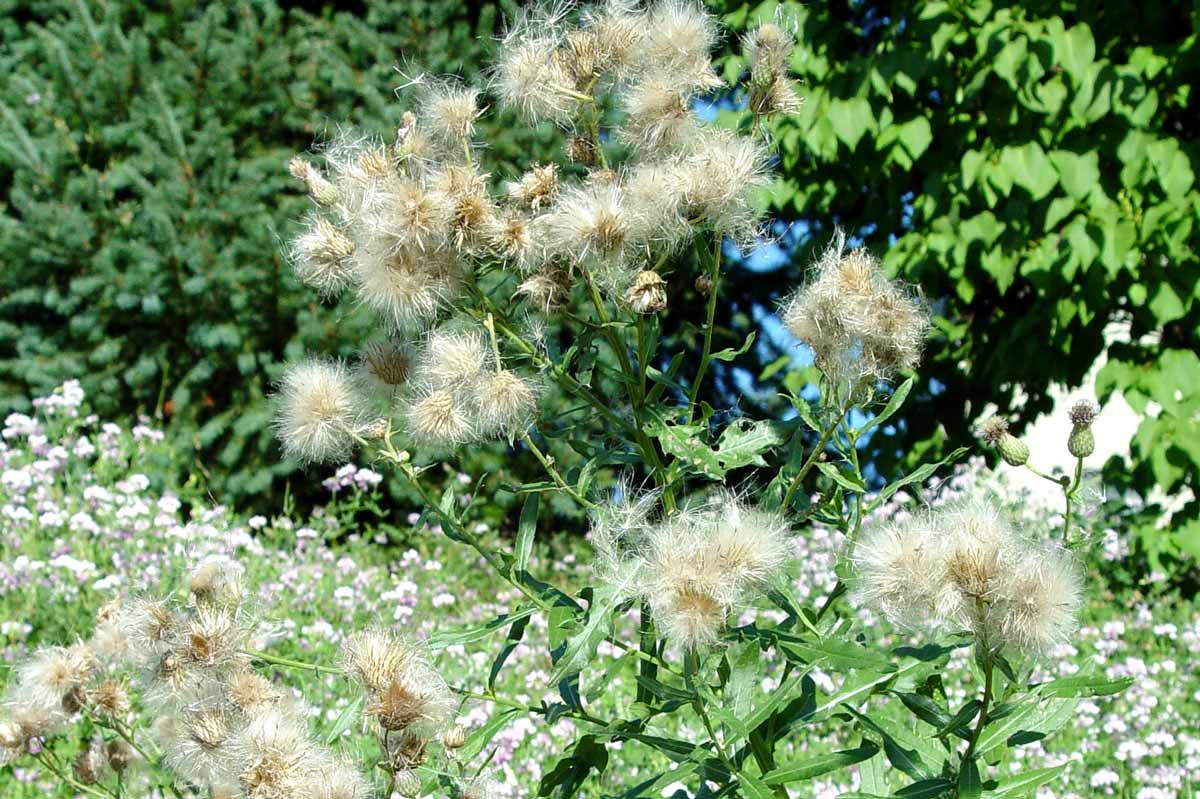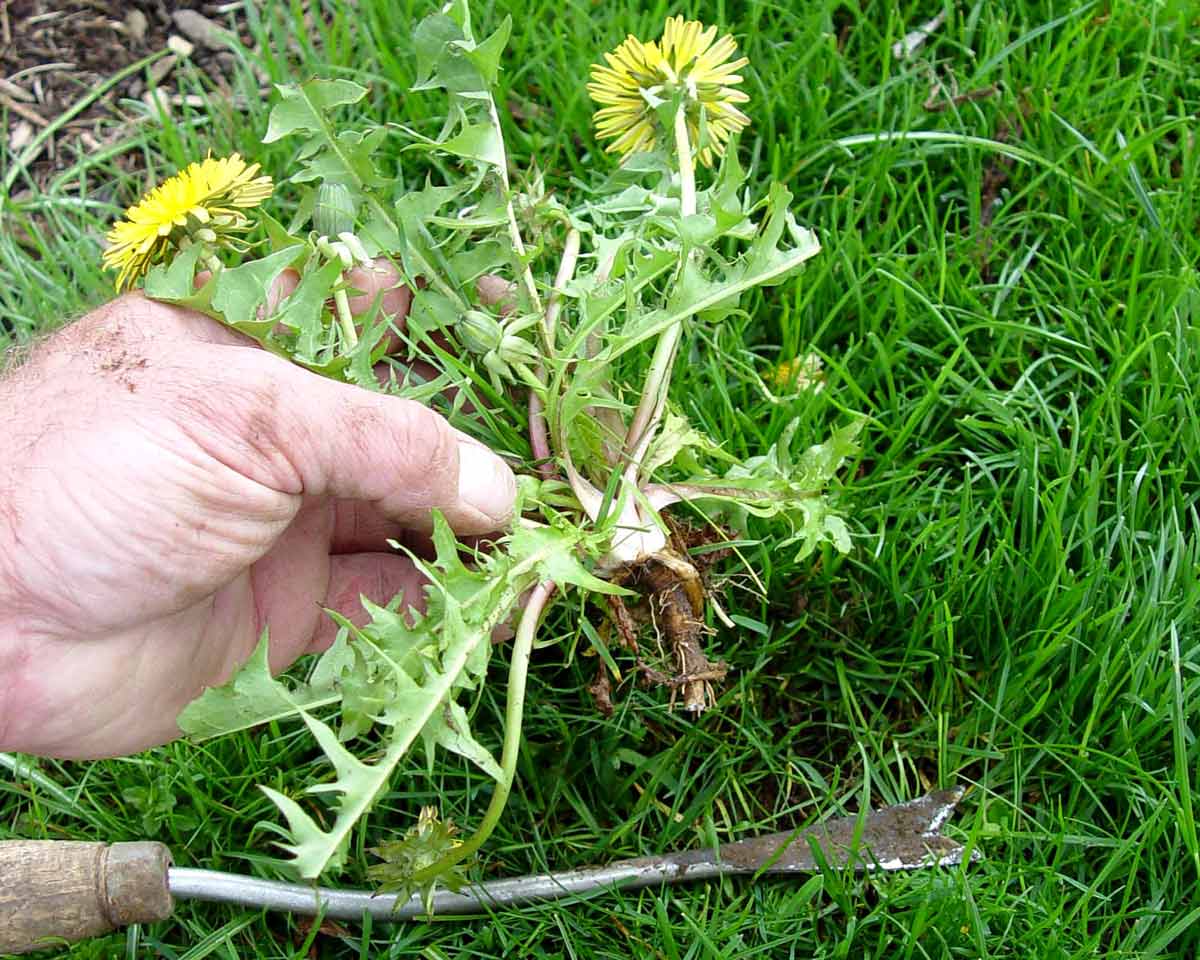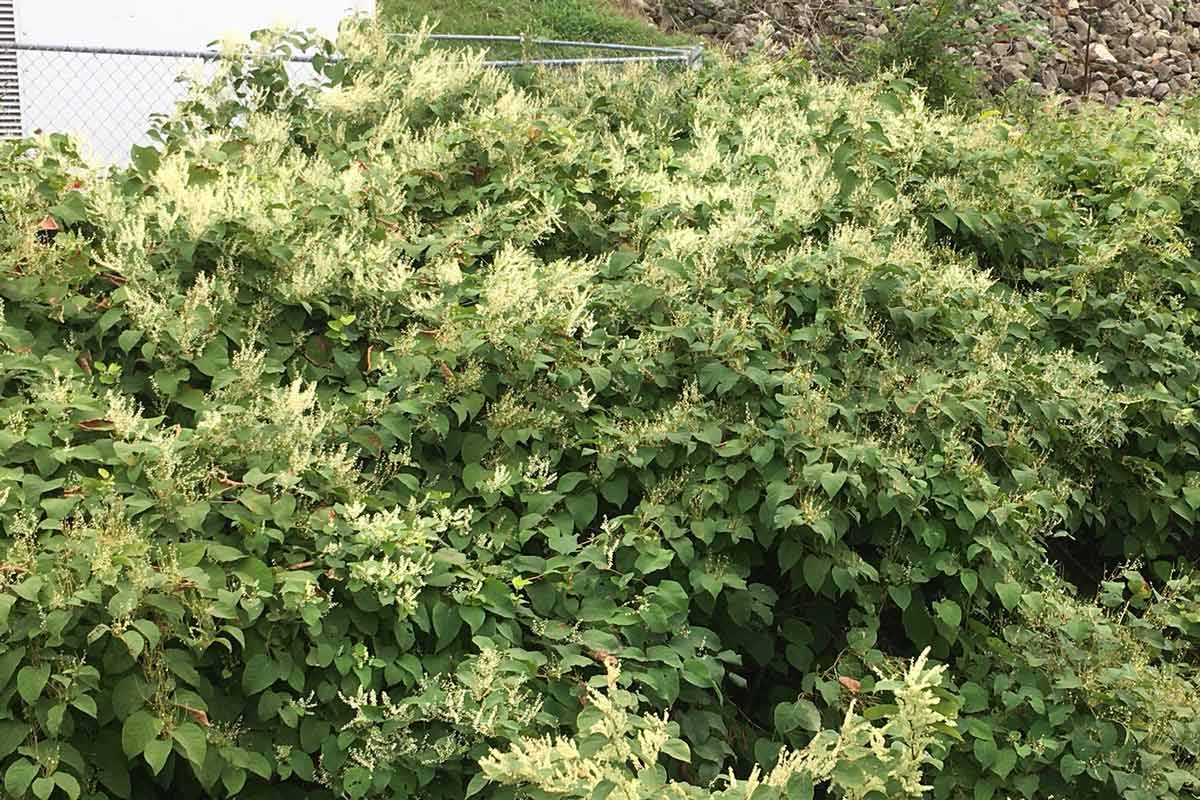Beat the Weeds? Stop the Seeds
The key to getting the upper hand on weeds is stopping the seeds from sprouting. Here's how.
And How You Can Beat Them
Weeds are weeds because they spread so freely and have the ability to out-compete most – if not all – of the vegetation around them.
These prolific plants use an arsenal of traits to dominate.
Understanding how weeds operate is useful for disrupting their spread, getting rid of them effectively, and even recognizing new weeds in waiting before they become a problem.
Let’s look at five key evolutionary advantages that help weeds dominate and ways to beat them.

Thistle is such an effective seeder not only for its prolific production of them but for the fluffy aids that carry them far and wide in the wind. Photo by George Weigel.
Weeds produce some of the most seeds of any plants on the planet. Annual weeds in particular are prolific seed producers since they depend on them for survival each year.
It’s not unusual for Pennsylvania smartweed to generate 20,000 seeds per plant each year. Crabgrass and puncturevine plants can produce 100,000 seeds a year. The king of seeding, groundsel, is capable of producing up to a million seeds per plant per year.
Those numbers give weedy seeders a leg up on other species that produce far less seed in nature’s battle to colonize open soil.
What’s more, some weeds have developed traits to send their seeds far and wide, such as the “fluffy” seedheads that help float dandelion, thistle, and marestail seed so far.
Some weed seeds are capable of living for decades buried in the soil – waiting until somebody or something stirs them to the surface to germinate. Lambsquarters seeds, for example, can live dormant in soil for 20 years. Pigweed seeds can double that.
Solutions: The best way to keep existing super seeder weeds from spreading is to remove the plants before they’ve had a chance to flower and set seed. Eliminating that potential seed can head off thousands of new weeds the following year and beyond.
As for seeds that blow in, at least they’re shallow-rooted and easy to pull or hoe. Patrol regularly, and get rid of "weedlings" ASAP.
Many new weeds also can be prevented by regular application of granular weed preventers. Two annual applications of Preen Extended Control Weed Preventer, for example, can prevent more than 100 types of weeds and can be used around more than 600 species of landscape plants.
Covering bare ground with groundcover plants or mulch is another way to discourage the sprouting of new weeds.

Some weeds are durable enough that they’ll grow even out of sidewalk cracks. Photo by George Weigel.
Many edible and ornamental plants are picky about where they’ll grow. Give them compacted soil, too much dampness, or not enough light and they’ll “wimp out.”
That’s not the case with so many of our most common weeds.
They’ll germinate in difficult sites – even tiny cracks in sidewalks – and grow in poor-quality and low-nutrition soils.
Solution: The rule of thumb is to never leave any ground bare. Plant, mulch, or hardscape over soil, and don’t ignore those out-of-the-way areas where invaders can colonize and become a new nearby source of spread.

Dandelion roots go deep to mine nutrients that other plants can’t reach. When removing dandelions, get the whole root because pieces left behind can resprout. Photo by George Weigel.
Superior rooting ability is another edge that many weeds have.
Some, such as dandelions and thistles, have long taproots that both make them hard to remove and allow them to mine nutrients deeper in the soil.
Some, such as bindweed and wild strawberry, send out runners that help them colonize new ground quickly.
And most perennial and tree-like weeds, such as pokeweed, Japanese knotweed, and tree-of-heaven, develop strong, elaborate root systems as they grow year by year.
Solution: As with annual weeds, the leading fight-back strategy is to kill or yank tough-rooted weeds early – before the expanding roots yield such invincible plants.
A combination of digging, cutting, and herbicide application – often more than once – may be needed to eradicate these difficult weeds.
Be sure to remove as much of the weeds, including roots, as possible because thistle, goutweed, bindweed, nutsedge, and many others are good at resprouting when even small sections of their roots or runners are left behind.

Japanese knotweed can dominate sites like this because it seeds well, spreads well, and grows fast. Photo by George Weigel.
Once weeds find a new home, most of them are adept at out-growing the competition. That allows them to shade out and overtake nearby plants, often to the point of killing them unless a gardener intervenes.
One way weeds do that is through superior feeding abilities. According to Cornell University, some weeds are capable of taking up the key growth elements of nitrogen, phosphorus, potassium, calcium, and magnesium up to three times more than a typical plant.
It’s that and fast-growing genetics that allow weeds such as kudzu, Japanese honeysuckle, and the aptly named mile-a-minute weed to dominate an area.
Solution: The super-fast growers are the worst to bring back under control once they spread, so recognizing them and controlling them when young is crucial. Otherwise, it’s going to take repeated digging, cutting, and/or herbicides to reverse an invasion.
Finally, many weeds have developed effective ways to defend themselves once they’re up and growing.
One evolutionary trick is to produce toxic or repellent compounds that prevent predators from eating them. Poison hemlock and nightshade, for example, are poisonous to mammals, while animals generally avoid the scent and flavor of onion- and mint-family weeds.
Another defense is producing plant-stunting chemicals that inhibit the growth of competitors. The juglone produced by walnut trees is the best-known example, but weeds such as mugwort, giant ragweed, lambsquarters, and pigweed are others with this “allelopathic” ability.
A third defense that’s especially useful against humans is thorns, prickles, and rash-causing compounds.
The skin-piercing growths on plants such as multiflora rose, thistle, stinging nettle, and puncturevine make people think twice about pulling, while poison ivy, giant hogweed, wild carrot, and poison sumac are examples of weeds that can yield painful rashes.
Solution: Take precautions when removing these weeds that bite back. Use eye protection and cover up with gloves, pants and long sleeves to defend against scratches, punctures and rashes. Don’t weed-whack the rash-causers.
Read more about weeds that hurt us.
Existing weeds will have to be cut down, pulled out, or sprayed with herbicides. Some may need repeated digging/cutting. Be sure to cover all skin before touching potentially rash-causing weeds, and never use a weed-whacker on them, which can spew the trouble-causing oils and saps onto skin, into eyes, or into the air.
New or follow-up outbreaks can often be prevented by stopping seed germination with twice-a-year applications of a weed-preventer such as Preen. With any herbicide, read labels carefully for instructions on safe and effective use for the weeds you have.